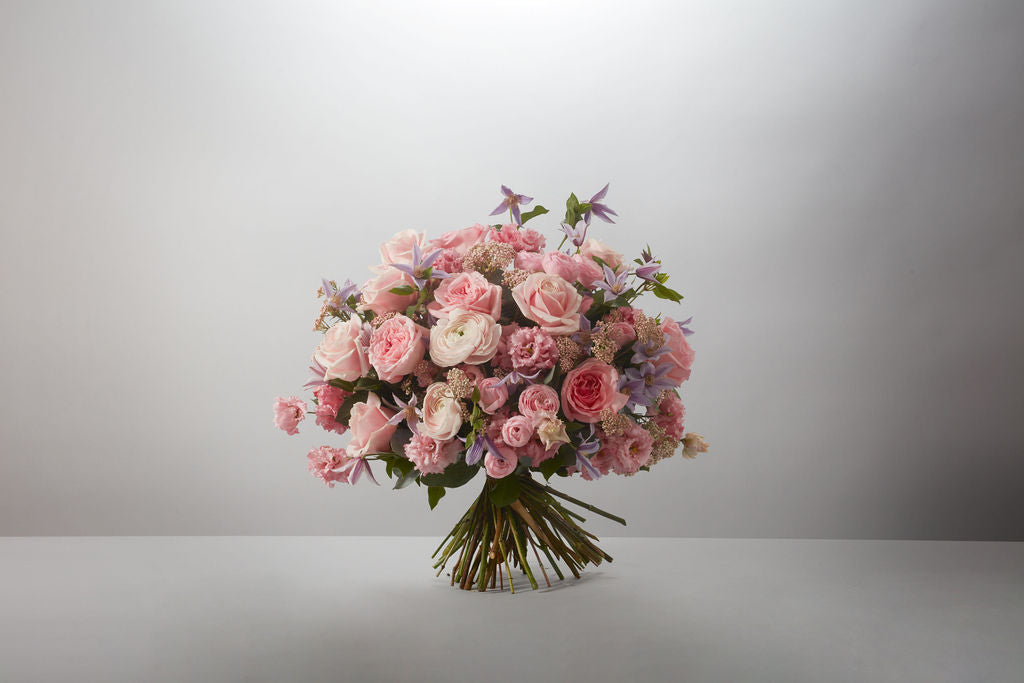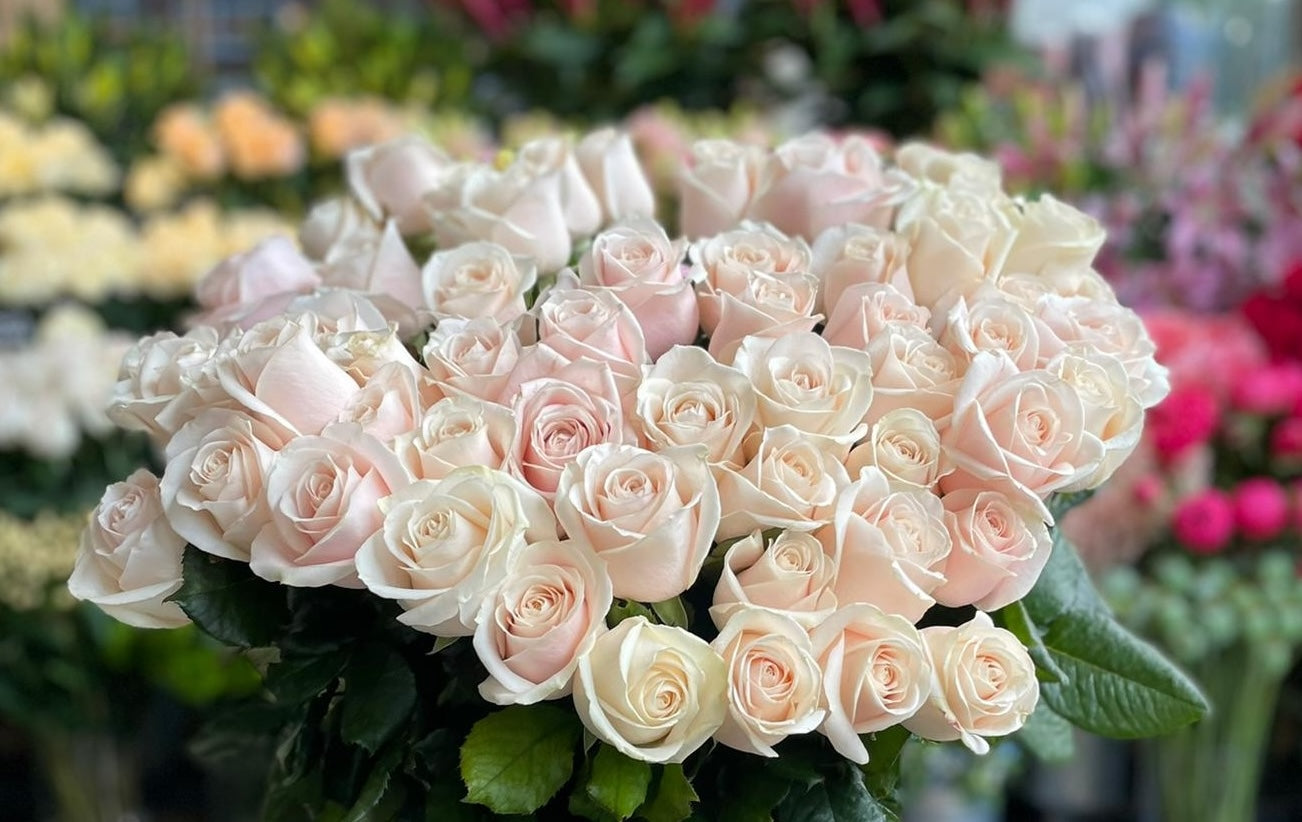5 Common Flower Arranging Mistakes and How to Avoid Them

Flower arranging is an art that can transform any space into a vibrant and elegant display. Whether you're crafting a bouquet for a special occasion or simply adding beauty to your home, creating the perfect floral arrangement takes skill, practice, and an eye for detail. But even the most seasoned arrangers can fall victim to a few common mistakes. Understanding what to avoid can elevate your floral designs from good to great, ensuring your flowers stay fresh and stunning for longer.
In this guide, we’ll walk you through five of the most common flower arranging mistakes and how you can easily avoid them to create professional-looking arrangements every time. From colour coordination to stem care, we'll share expert tips that will help you achieve flawless floral designs.
1. Using Too Many Flower Types
When it comes to flower arranging, less is often more. One of the most frequent mistakes made by beginners (and even seasoned arrangers) is using too many different types of flowers in a single arrangement. While it's tempting to add a wide variety of blooms, this can quickly lead to a cluttered and unfocused arrangement. The key to a stunning bouquet is balance and harmony, which is often compromised when too many flower varieties are mixed together.
How to Avoid It
-
Choose a Focal Flower: Select one or two flowers that will serve as the "showstoppers" of your arrangement. These should be the flowers that immediately catch the eye, whether it's the bold, dramatic petals of a lily or the soft elegance of a rose.
-
Support with Complementary Varieties: Once you've chosen your focal flowers, opt for a few complementary types that will accentuate, rather than compete with, your main blooms. Consider textures and shapes—flowers like eucalyptus or greenery can offer a soft contrast that enhances your showstopper without overpowering it.
-
Keep It Cohesive: Aim for a cohesive look by sticking to a specific theme or colour palette. This creates a sense of unity, and helps the arrangement appear intentional rather than chaotic. Remember, the beauty of flower arranging lies in simplicity and careful selection.
By avoiding this mistake, you'll ensure your arrangements are visually appealing and impactful, with each flower playing its part in creating a beautiful and well-balanced display.
2. Improper Colour Mixing
While the beauty of flowers lies in their vibrant colours, one of the most common mistakes flower arrangers make is mixing too many contrasting hues. While bold colour combinations can be eye-catching, too many colours in one arrangement can lead to a chaotic and overwhelming effect. It’s important to create harmony in your arrangement by carefully choosing a colour palette that works together.
How to Avoid It
-
Stick to a Harmonious Colour Palette: One of the easiest ways to avoid colour chaos is by sticking to a well-thought-out colour scheme. Choose two or three primary colours, and work within those shades for a polished and cohesive look.
-
Use Transition Colours: If you wish to mix a variety of colours, try using transitional shades to create a smooth gradient between them. For example, a combination of peach, soft pink, and blush creates a gentle flow that makes the transition between colours seamless.
-
Monochromatic Elegance: For a more sophisticated look, consider using a monochromatic arrangement, where you focus on different shades of a single colour. This approach adds depth and texture while maintaining a refined and cohesive aesthetic. Think about the varying tones of lavender, from pale purple to deep violet, for a calming and elegant effect.
By mastering colour combinations, you'll not only avoid the mistake of improper colour mixing but also enhance the overall impact of your floral designs.
3. Cutting Stems Incorrectly
Cutting the stems of flowers is one of the most crucial steps in flower arranging, yet it's an area where many arrangers go wrong. Cutting flower stems straight across can block water from reaching the bloom, causing wilting and shortening the life of the flowers. To keep your flowers fresh for as long as possible, it's essential to cut the stems properly before arranging them.
How to Avoid It
-
Cut Stems at a 45-Degree Angle: Always cut flower stems at a 45-degree angle. This method increases the surface area for water absorption, ensuring that your flowers stay hydrated and last longer.
-
Trim Stems Regularly: Over time, stems can begin to seal themselves off, reducing their ability to absorb water. Trim the stems every few days to keep the flowers looking fresh and vibrant. Even a small trim can make a noticeable difference.
-
Use Sharp Tools: Be sure to use sharp scissors or garden shears to make a clean cut. This prevents any crushing of the stems, which can affect the flower’s ability to absorb water properly.
By ensuring you’re cutting your stems at the right angle and maintaining regular stem care, you'll significantly extend the lifespan of your floral arrangements.
4. Loose Arrangement of Blooms
One of the biggest mistakes beginners make when arranging flowers is leaving them too loose or spread out, resulting in an arrangement that appears sparse and unfinished. Flowers that are loosely arranged may also have trouble staying in place, which can affect the overall structure of the arrangement.
How to Avoid It
-
Create Flower Clusters: To avoid an empty and disorganised arrangement, try clustering flowers together. Grouping them in threes or odd numbers creates a more balanced and visually pleasing arrangement.
-
Position Clusters at the Edges: Arrange the flower clusters towards the edges of the vase or container, as this creates a sense of fullness and helps to guide the viewer’s eye around the design.
-
Use Floral Tape or Foam: To help secure your flowers and prevent them from shifting, consider using floral foam or floral tape. These tools allow you to anchor your stems in place, providing a stable structure for the arrangement to hold its shape.
By keeping your flowers tightly packed and carefully positioned, you’ll avoid a messy and lacklustre result, achieving a well-structured and visually impactful display.
5. Poor Maintenance
No matter how beautiful your flower arrangement may be initially, without proper maintenance, it will begin to deteriorate quickly. Flowers need care to extend their freshness and vibrancy, and neglecting these needs is a common mistake that leads to premature wilting.
How to Avoid It
-
Change the Water Regularly: To keep your flowers hydrated and prevent bacteria buildup, it’s essential to change the water every other day. Stagnant water can quickly lead to wilted, lifeless blooms.
-
Remove Excess Foliage: Any foliage that sits below the waterline should be removed, as it can rot and cause bacterial growth, which can harm your flowers. Keeping your stems clean and free of any decaying matter will improve the overall health of the arrangement.
-
Use Flower Food: Adding flower food to the water can make a significant difference in how long your flowers last. Flower food contains essential nutrients that flowers need to stay fresh for a longer period of time.
Maintaining your flower arrangement properly will ensure that your blooms stay fresh, vibrant, and beautiful for as long as possible, giving you more time to enjoy their elegance.
Transform your space with beautifully arranged flowers. Explore our premium floral collections today! Shop Now
Conclusion
Flower arranging is an art that can bring beauty, elegance, and joy to any occasion, but it’s not without its challenges. By avoiding these common mistakes – using too many flower types, improper colour mixing, incorrect stem cutting, loose arrangements, and poor maintenance – you can create stunning, long-lasting floral designs that will impress everyone.
Remember, practice makes perfect! With time, you’ll refine your technique and develop your own signature style. So, the next time you sit down to arrange your flowers, take a moment to think about these tips and tricks, and you’ll be on your way to becoming a flower arranging pro in no time.



